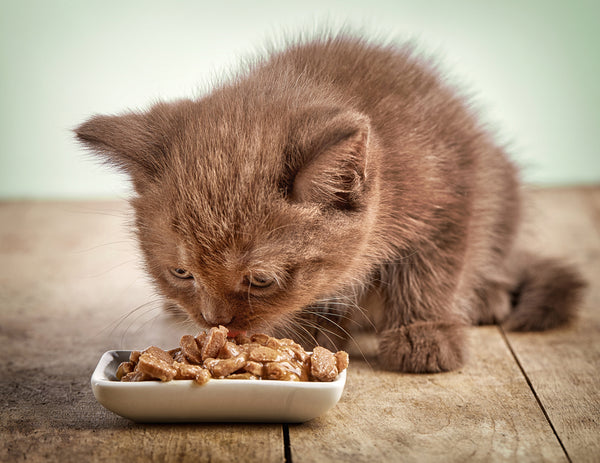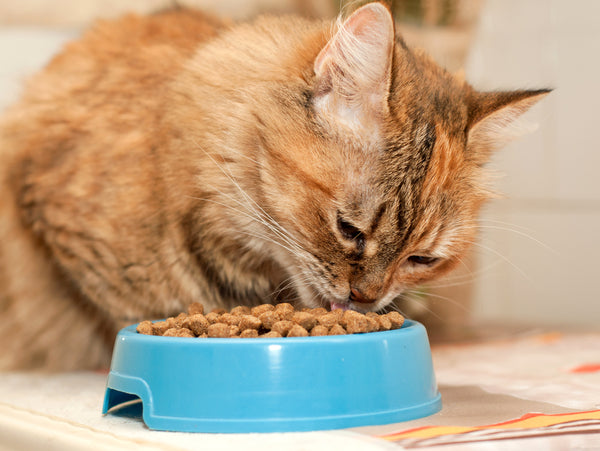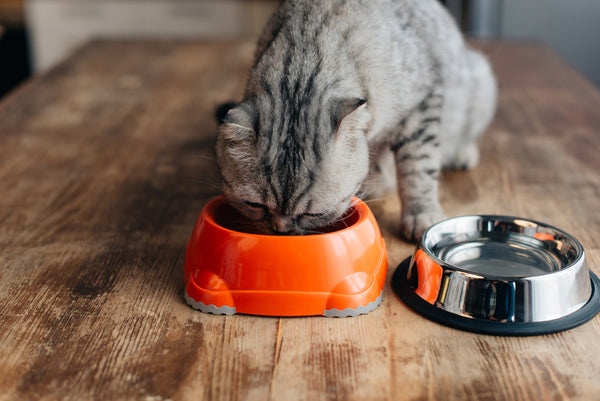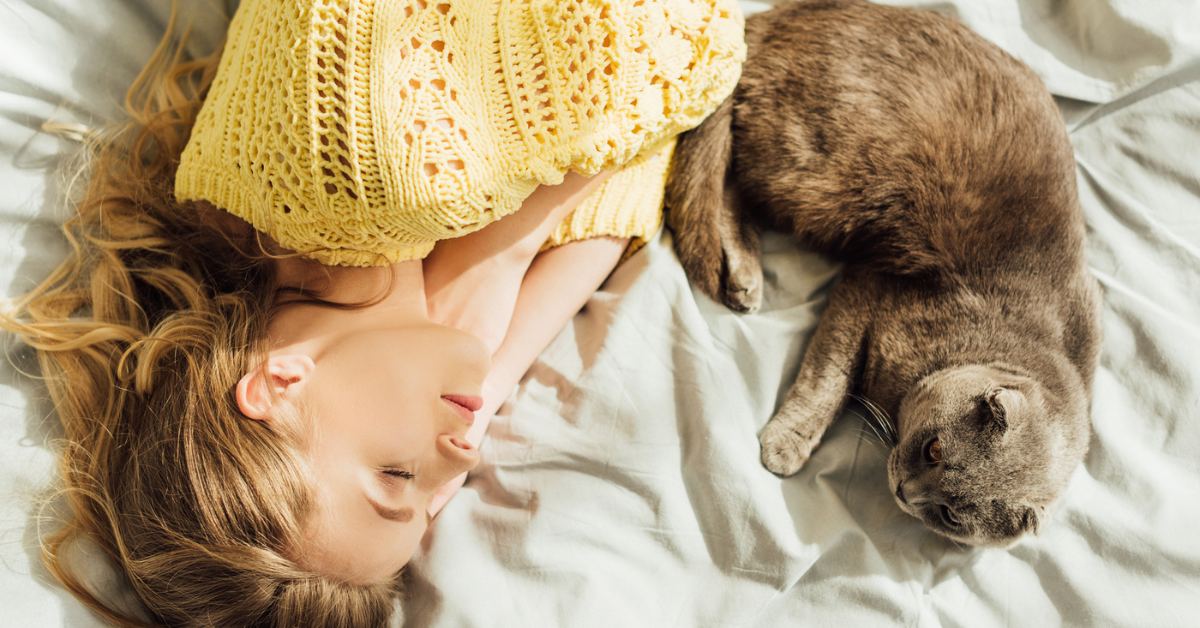Wet Vs. Dry Cat Food: Which is Better?
As a caring cat owner, you always want the best for your furry friend, especially with their food. You typically have two choices: dry cat food in a bag or canned wet food. Whether you've just brought home a new kitty or are looking to transition to a new food, the decision process can be overwhelming, and understanding the impact of each on your cat's diet is essential.
This blog explores the choice between wet and dry cat food, focusing on your cat's health, age, and preferences. It offers guidance to help owners choose the best option for their pet's health and happiness.
What are Wet Cat Foods?

Wet cat food, often found in cans or pouches, is known for its high moisture content, which can be particularly beneficial for cats. This type of food is closer to a cat's natural diet, providing hydration and a rich source of animal protein. It's especially advantageous for cats with kidney disease, such as lower urinary tract disease, as the extra water intake can help manage these conditions. Senior cats, or those with dental issues like missing teeth, often find the soft texture of wet food easier to eat.
Fur parents feeding wet food often note its ability to keep cats hydrated without drinking as much water. This is crucial since many cats do not naturally drink enough water alone. Furthermore, cats prefer the taste and variety of wet foods, making it a good choice for picky eaters.
However, wet cat food does have some downsides. It generally has a shorter shelf life once opened and needs to be refrigerated to prevent bacterial growth. It's also typically more expensive than dry food and might contribute to dental health issues since it doesn't help clean the cat's teeth as dry food can.
What are Dry Cat Foods?

Dry cat food, or kibble, is energy-dense and nutritionally complete, making it a convenient choice for many cat owners. It can be free-fed, allowing cats to eat at their own pace, which can be a significant advantage for pet parents with busy schedules. Dry food has a longer shelf life even after the package is opened, and it's usually more budget-friendly than wet food.
Dry food can promote dental health through the mechanical action of crunching on the hard kibble, which helps clean the surface of the cat's teeth. High-quality dry food, formulated according to the guidelines set by the American Feed Control Officials, can provide all the nutrients most cats need for a healthy life.
Mixing Wet and Dry Food: A Balanced Approach

For many cat owners, the best diet might include both wet and dry food, taking advantage of the benefits of each. Mixing wet and dry cat food can help ensure your cat gets enough water through their diet while still enjoying the dental benefits of crunchy kibble. This approach can also provide variety in texture and flavor, keeping mealtime interesting for your cat.
Introduce any new food gradually to prevent digestive upset and closely monitor your cat's weight and health. Remember, the best diet for your cat depends on age, health conditions, and personal preference.
What are the Pros and Cons of Wet and Dry Cat Food?
Knowing the advantages and disadvantages of wet and dry cat foods is essential to choosing the right one for your feline friends. Below, we'll cover some of the pros and cons of these two types of cat food.
Pros of Wet Food
- Water Content: The higher the water content, the easier it is for your cat to stay hydrated. Ensuring proper hydration benefits every cat, but it can be especially helpful for cats with certain medical conditions, such as urinary and kidney issues. The higher water content in wet cats helps flush out urinary crystals and reduce future crystal formations.
- Comes in Pre-Measured Portions: Feeding your cat the proper portions is as important as feeding your cat. Some cats may need more discipline at mealtime and require their owners to measure each meal. May wet food varieties come in pre-measured portions to help save time.
- Easier for Cats to Chew: The softer texture of wet food can make it much easier for cats to chew, especially senior cats with missing teeth or other dental issues.
- Cats Love the Flavor: Due to the preparation method, wet food tends to be more palatable than dry food, which is a major benefit if your cat is a picky eater.
Cons of Wet Food
- Cost: The cost is the biggest drawback to feeding your cat wet food. Compared to dry food, wet food costs more per ounce. The extra moisture content makes wet food less nutrient-dense, meaning you'll need to buy more cans to ensure your cat gets all the necessary nutrients.
- It's More Easily Perishable: Wet food is quickly perishable once the can is open. Any cat food left in the can must be immediately covered with a secure can topper and refrigerated. Additionally, you'll have to pick up your cat's food after a couple of hours at most, even if your cat hasn't finished, or it will spoil. Constantly having to throw out spoiled wet food can lead to tremendous waste.
Pros of Dry Food
- Price: The biggest pro of feeding your cat dry food is the price. Buying dry cat food by bag is less expensive than buying wet food, making it a more budget-friendly option.
- Doesn't Need to be Refrigerated: Kibble must not be stored in the fridge after opening the bag. This "shelf-stable" status allows for free feeding, meaning you can always leave dry cat food out in a bowl. This may be a better option for people with busier schedules and cats who are slow eaters and prefer to nibble at their bowls throughout the day. Dry food also works with automatic pet feeders. You won't need to worry about dry food spoiling, but it will lose its taste and nutritional value if left out for several days. Regardless, practicing proper food storage is still important.
To keep your cat's dry food as fresh as possible, consider investing in a Vittles Vault Food Storage Container. Made with patented Gamma Seal Technology, these storage containers have seals that keep harmful moisture and light out while creating an airtight food storage solution that keeps every last piece of kibble as fresh as possible.
Cons of Dry Food
- Much Lower Moisture Content: While the lower moisture content in dry cat food shouldn't surprise you, it can lead to dehydration if your cat is not getting enough water elsewhere.
- Lower in Protein, Higher in Carbohydrates & Fillers: Cats are obligate carnivores, which means their diets require animal protein. Dry food is usually higher in carbohydrates and other fillers. While cats can digest and certainly gain nutrients from carbohydrate sources, their diets don't require them.
Find the Perfect Balance in Your Cat's Diet

Choosing between wet vs. dry cat food depends on your cat's diet, preferences, and health. For pet parents, mixing wet and dry food might offer the best of both worlds, ensuring hydration while benefiting dental health. Ultimately, consulting with a vet and considering your cat's life stage and health conditions will guide you to the best diet, whether wet, dry, or a combination.
According to the American Feed Control Officials, whether wet or dry, high-quality cat foods should provide all the nutrients healthy cats require. Remember, the goal is a balanced diet that supports your cat’s overall well-being from kittenhood through senior years.
When serving wet and dry food diets, utilizing high-quality feeding products like bowls and feeding and watering accessories from Petmate can enhance your cat's eating experience. These products are designed to meet your cat's feeding needs at every life stage, from playful kittens to older cats. We offer a range of durable, safe, and stylish options to ensure your cat's meals are as enjoyable as they are nutritious. Shop at Petmate today.Related posts
View all-

Celebrate National Pet Week: Fun Ideas to Celebrate with Your Pet
National Pet Week is right around the corner, so it's time to plan how you're going to celebrate! While we're sure you celebrate your pet all day every day... Read Article -

5 Simple Tips to Make Sure Your Cat Drinks Enough Water
Ensuring your cat stays hydrated is important, but it can be challenging since many cats don't drink enough water. Dehydration can lead to kidney disease and other health issues. Fortunately, you can encourage your cat to drink more with a few simple changes. Read Article -

How to Keep Your Cat Busy at Night (So You Can Sleep)
For many cat owners, the quest for a good night's sleep while keeping their feline friends content and engaged can seem like a never-ending battle. Cats, naturally more active at night or early in the morning, often disrupt your sleep schedules with nocturnal activity, whether through playful nature or seeking attention. Read Article




